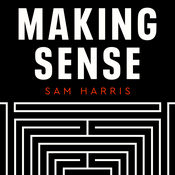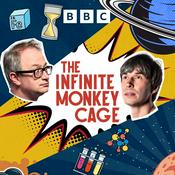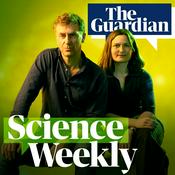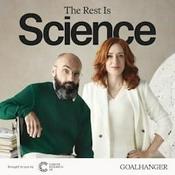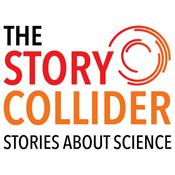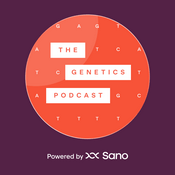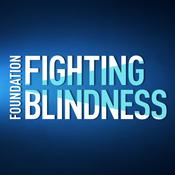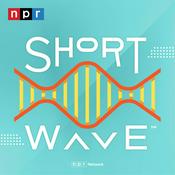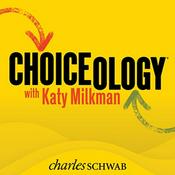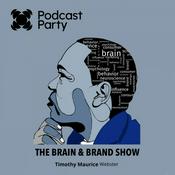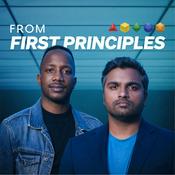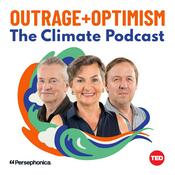Normal Curves: Sexy Science, Serious Statistics
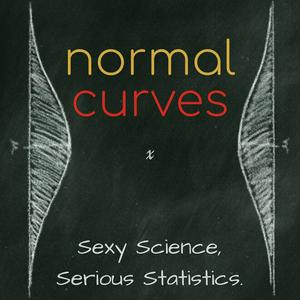
25 episodes

Bonus: Vitamin D Part 1 with commentary
2025/12/29 | 1h 29 mins.
While we’re on a short break between seasons, we’re revisiting some of our favorite episodes from Season 1. This week, we’re re-releasing our deep dive into vitamin D and the origins of the so-called deficiency epidemic, with added commentary.Is America really facing an epidemic of vitamin D deficiency? While this claim is widely believed, the story behind it is packed with twists, turns, and some pesky statistical cockroaches. In this episode, we’ll dive into a study on Hawaiian surfers, expose how shifting goalposts can create an epidemic, tackle dueling medical guidelines, and flex our statistical sleuthing skills. By the end, you might wonder if the real deficiency lies in the data.Statistical topicsconflicts of interestcut points and thresholdsdichotomizationincentives in sciencemeasurement and classificationnormal distribution researcher biasesstandard deviationstatistical sleuthingMethodologic morals“Arbitrary thresholds make for arbitrary diseases.”“Statistical errors are like cockroaches: Where there’s one, there’s many.”Note that all blood vitamin D levels discussed in the podcast are 25-hydroxyvitamin D levels given in units of ng/ml. To convert from ng/ml to nmol/L, use the formula: nmol/L=2.5*ng/ml. For example, a vitamin D level of 30 ng/mL corresponds to 75 nmol/L.CitationsDr. Rhonda Patrick: Micronutrients for Health & Longevity. Huberman Lab Podcast. May 1, 2022Noh CK, Lee MJ, Kim BK, et al. A Case of Nutritional Osteomalacia in Young Adult Male. J Bone Metab. 2013; 20:51-55.Binkley N, Novotny R, Krueger D, et al. Low vitamin D status despite abundant sun exposure. J Clin Endocrinol Metab. 2007;92:2130-5. Malabanan A, Veronikis IE, Holick MF. Redefining Vitamin D Insufficiency. Lancet. 1998;351:805-6. Dawson-Hughes B, Heaney RP, Holick MF, et al. Estimates of optimal vitamin D status. Osteoporos Int. 2005;16:713-6.Holick MF. Vitamin D deficiency. N Engl J Med. 2007;357:266-81.Cui A, Xiao P, Ma Y, et al. Prevalence, trend, and predictor analyses of vitamin D deficiency in the US population, 2001-2018. Front Nutr. 2022;9:965376. Ross AC, Manson JE, Abrams SA, et al. The 2011 report on dietary reference intakes for calcium and vitamin D from the Institute of Medicine: what clinicians need to know. J Clin Endocrinol Metab. 2011;96:53-8. Holick MF, Binkley NC, Bischoff-Ferrari HA, et al. Evaluation, Treatment, and Prevention of Vitamin D Deficiency: an Endocrine Society Clinical Practice Guideline. J Clin Endocrinol Metab. 2011;96:1911-30. Manson JE, Brannon PM, Rosen CJ, et al. Vitamin D deficiency-is there really a pandemic. N Engl J Med. 2016;375:1817-20. Conti G, Chirico V, Lacquaniti A, et al. Vitamin D intoxication in two brothers: be careful with dietary supplements. J Pediatr Endocrinol Metab. 2014;27:763-7.Holick, Michael, et al. The UV Advantage. Ibooks, 2004.Holick, Michael F. The Vitamin D Solution: A 3-Step Strategy to Cure Our Most Common Health Problems. Penguin Publishing Group, 2011.Szabo, Liz. Vitamin D, the Sunshine Supplement, Has Shadowy Money Behind It. The New York Times. August 18, 2018.Lee JM, Smith JR, Philipp BL, Chen TC, Mathieu J, Holick MF. Vitamin D deficiency in a healthy group of mothers and newborn infants. Clin Pediatr. 2007;46:42-4. Holick MF. Vitamin D deficiency: what a pain it is. Mayo Clin Proc. 2003;78:1457-9.Passeri G, Pini G, Troiano L, et al. Low Vitamin D Status, High Bone Turnover, and Bone Fractures in Centenarians. J Clin Endocrinol Metab. 2003;88:5109-15. Armstrong, David. The Child Abuse Contrarian. ProPublica. September 16, 2018.Irwig MS, Kyinn M, Shefa MC. Financial Conflicts of Interest Among Authors of Endocrine Society Clinical Practice Guidelines. J Clin Endocrinol Metab. 2018;103:4333-38. Demay MB, Pittas AG, Bikle DD, et al. Vitamin D for the Prevention of Disease: An Endocrine Society Clinical Practice Guideline. J Clin Endocrinol Metab. 2024;109:1907-47.McCartney CR, McDonnell ME, Corrigan MD, et al. Vitamin D Insufficiency and Epistemic Humility: An Endocrine Society Guideline Communication. J Clin Endocrinol Metab. 2024; 109:1948–54.See our detailed notes hereKristin and Regina’s online coursesDemystifying Data: A Modern Approach to Statistical Understanding Clinical Trials: Design, Strategy, and AnalysisMedical Statistics Certificate Program Writing in the SciencesEpidemiology and Clinical Research Graduate Certificate ProgramPrograms that we teach in:Epidemiology and Clinical Research Graduate Certificate Program Find us on:Kristin - LinkedIn & Twitter/XRegina - LinkedIn...

The Batman Effect: Do weird surprises make people nicer?
2025/12/15 | 47 mins.
DescriptionNobody expects Batman—but when he shows up in a crowded subway car, are people suddenly more likely to help a passenger in need? This week on Normal Curves, we unpack a recent quasi-experimental field study involving a caped superhero costume, a prosthetic pregnancy belly, and some puzzled Italian commuters. Along the way, we demystify three common ways of describing effects for binary outcomes—risk differences, risk ratios, and odds ratios—and explain what they actually mean in plain language. We also do some statistical sleuthing, uncover a major problem hiding in the paper’s numbers, and debate what really counts as an effective Batman outfit.Statistical topicsabsolute vs relative effectsbinary outcomescoding errorsdata errors and quality controleffect size interpretationfield experimentsoddsodds ratiospercentage differencesquasi-experimental studiesrisk differencesrisk ratiosstatistical sleuthingMethodological morals“We love an uncluttered paper, but when it's missing the basics, it's like an empty fridge. Clean, yes, but dinner is not happening.”“Before you make a fancy model, make sure the numbers in the table in the text match.”ReferencesPagnini F, Grosso F, Cavalera C, et al. Unexpected events and prosocial behavior: the Batman effect. Npj Ment Health Res. 2025;4(1):57. Published 2025 Nov 3. doi:10.1038/s44184-025-00171-5PubPeer. Comments on “Unexpected events and prosocial behavior: the Batman effect.” Accessed December 2025.Sainani KL. Understanding odds ratios. PM R. 2011;3(3):263-267. doi:10.1016/j.pmrj.2011.01.009Nuzzo RL. Communicating measures of relative risk in plain English. PM R. 2022;14(2):283-287. doi:10.1002/pmrj.12761Sainani KL. How statistics can mislead. Am J Public Health. 2012;102:e3-4.Kristin and Regina’s online courses: Demystifying Data: A Modern Approach to Statistical Understanding Clinical Trials: Design, Strategy, and Analysis Medical Statistics Certificate Program Writing in the Sciences Epidemiology and Clinical Research Graduate Certificate Program Programs that we teach in:Epidemiology and Clinical Research Graduate Certificate Program Find us on:Kristin - LinkedIn & Twitter/XRegina - LinkedIn & ReginaNuzzo.com(00:00) - Intro (03:42) - Why would Batman make people nicer? (07:33) - How they ran the experiment (17:50) - Did Batman save the day? Different ways to answer that (23:00) - What are odds and odds ratios? (30:00) - Where people get it wrong (34:52) - The plot twist: big numerical errors (41:20) - Did men or women give up their seat more often? (43:49) - Wrap-up and methodological morals

Holiday Survival Guide Part 2: The survey study edition
2025/12/01 | 1h 4 mins.
Does the temperature of your coffee six months ago really predict whether you feel gassy today? This week we dissect a new nutrition survey study on hot and cold beverage habits that claims to connect drink temperature with gut symptoms, anxiety, and more—despite relying on year-old memories and a blizzard of statistical tests. It’s the perfect case study for our Holiday Survival Guide Part 2, where we teach you how to talk with Uncle Joe at the dinner table about one of the most common—and most fraught—study designs in science: cross-sectional surveys. We walk through our easy checklist for making sense of results, show how recall bias and measurement error can skew the story, and reacquaint you with nonmonogamous Multiple-Testing Dude, who’s been very busy in this dataset. A friendly, practical guide to spotting when researchers are just torturing the data until it confesses.Statistical topicsConfoundingCross-sectional studiesFalse positivesMeasurement errorMultiple testingPICOT / PIVOT frameworkRecall biasResearch hypothesesSample size and powerSignal vs. noiseSMART frameworkStatistical significanceSubgroup analysesSurvey designTransparency and trustworthinessMethodological morals“When your measurement starts with ‘think back to last winter’ you might as well use a random number generator.”“If the effect is only significant in certain subgroups in certain seasons for certain outcomes, it might just be a bad case of gas.”ReferencesWu T, Doyle C, Ito J, et al. Cold Exposures in Relation to Dysmenorrhea among Asian and White Women. Int J Environ Res Public Health. 2023;21(1):56. Published 2023 Dec 30. doi:10.3390/ijerph21010056Wu T, Ramesh N, Doyle C, Hsu FC. Cold and hot consumption and health outcomes among US Asian and White populations. Br J Nutr. Published online September 18, 2025. doi:10.1017/S000711452510514XKristin and Regina’s online courses: Demystifying Data: A Modern Approach to Statistical Understanding Clinical Trials: Design, Strategy, and Analysis Medical Statistics Certificate Program Writing in the Sciences Epidemiology and Clinical Research Graduate Certificate Program Programs that we teach in:Epidemiology and Clinical Research Graduate Certificate Program Find us on:Kristin - LinkedIn & Twitter/XRegina - LinkedIn & ReginaNuzzo.com(00:00) - Intro (04:36) - Did they have real research hypotheses? (10:29) - Observational or randomized experiment? (20:09) - PICOT and PIVOT (26:20) - Memory problems (32:03) - Five outcomes and measurement problems therein (36:56) - SMART (41:50) - Multiple Testing Dude is having a great time (52:36) - How big is the effect? (59:06) - Wrap-up and Irish Coffee rating scale

Holiday Survival Guide: How to talk about scientific studies around the dinner table
2025/11/17 | 1h 1 mins.
Does a little alcohol really make you speak a foreign language better? This week we unpack a quirky randomized trial that tested Dutch pronunciation after a modest buzz—and came to the opposite conclusion the researchers expected. We use it as the perfect holiday case study: instead of arguing with Uncle Joe at the dinner table, we’ll show you how to pull apart a scientific headline using a friendly, practical checklist anyone can learn. Along the way we stress-test the study’s claims, take a quick detour into what a .04% buzz actually looks like, and run our own before-and-after experiment with two brave science journalists at the ScienceWriters2025 conference in Chicago. A holiday survival guide with vodka tonics, statistical sleuthing, and a few surprisingly smooth French phrases.Statistical topicsAlternative explanationsArithmetic consistency / GRIM testBlindingEffect size / magnitudeGeneralizability / external validityObservational studies vs. experimentsOutcome measurementPICOT frameworkPlacebo and expectancy effectsPrimary outcomes / pre-specificationRandomized controlled trialsResearch hypothesesSample size SMART frameworkStatistical significance (signal vs. noise)Transparency and trustworthinessMethodological morals“You don't need a PhD to read a study. Just remember, PICOT and SMART.”“A decimal point can mean the difference between life and death. Details matter.”ReferencesRenner F, Kersbergen I, Field M, Werthmann J. Dutch courage? Effects of acute alcohol consumption on self-ratings and observer ratings of foreign language skills. J Psychopharmacol. 2018;32(1):116-122. doi:10.1177/0269881117735687Kristin and Regina’s online courses: Demystifying Data: A Modern Approach to Statistical Understanding Clinical Trials: Design, Strategy, and Analysis Medical Statistics Certificate Program Writing in the Sciences Epidemiology and Clinical Research Graduate Certificate Program Programs that we teach in:Epidemiology and Clinical Research Graduate Certificate Program Find us on:Kristin - LinkedIn & Twitter/XRegina - LinkedIn & ReginaNuzzo.com (00:00) - Intro (03:30) - Uncle Joe and the question of alcohol (07:20) - Randomized controlled trial (10:10) - PICOT mnemonic (15:43) - Just how drunk? (22:25) - Boring non-placeb (33:13) - Kristin’s SMART mnemonic (39:32) - How big of an effect? (50:46) - Two science journalists walk into a bar (57:00) - Martini scale and wrap-up

Shingles Shot and Dementia: Could one vaccine protect your brain?
2025/11/03 | 1h 12 mins.
What do chickenpox and shingles have to do with your brain? This week, we dig into two 2025 headline-grabbing studies that link the shingles shot to lower dementia rates. We start in Wales, where a birthday cutoff turned into the perfect natural experiment, and end in the U.S. with a multi-million-person megastudy. Featuring bias-variance Goldilockses, Fozzy-the-Bear regression discontinuities, a Barbie-versus-Oppenheimer showdown for propensity scores – and the hottest rebrand of inverse-probability weighting you’ll ever hear.Statistical topicsAbsolute vs. relative riskBias–variance tradeoffCausal inferenceCensoringConfoundingFuzzy regression discontinuity designHealthy-user biasInverse probability of treatment weighting (IPTW)Longitudinal studyNatural experimentNegative controlsOptimal bandwidthPropensity scoresSelection biasSubgroup analysisTriangular kernel weightsMethodological morals“Propensity scores are the lipstick you put on observational pigs.”“Natural experiments are a hot flirtation date with causality.”ReferencesEyting M, Xie M, Michalik F, Heß S, Chung S, Geldsetzer P. A natural experiment on the effect of herpes zoster vaccination on dementia. Nature. 2025 May;641(8062):438-446. doi: 10.1038/s41586-025-08800-x. Epub 2025 Apr 2. PMID: 40175543; PMCID: PMC12058522.Polisky V, Littmann M, Triastcyn A, et al. Varicella-zoster virus reactivation and the risk of dementia. Nat Med. Published online October 6, 2025. doi:10.1038/s41591-025-03972-5Sainani KL. Propensity scores: uses and limitations. PM&R 2012; 4:693-97.Detailed Show Notes PageKristin and Regina’s online courses: Demystifying Data: A Modern Approach to Statistical Understanding Clinical Trials: Design, Strategy, and Analysis Medical Statistics Certificate Program Writing in the Sciences Epidemiology and Clinical Research Graduate Certificate Program Programs that we teach in:Epidemiology and Clinical Research Graduate Certificate Program Find us on:Kristin - LinkedIn & Twitter/XRegina - LinkedIn & ReginaNuzzo.com(00:00) - Intro and first gratuitous mention of sex (03:56) - What are shingles, chickenpox, and the vaccines against them? (12:30) - Fun facts about the varicella zoster and herpes viruses (18:00) - A natural experiment in Wales (21:54) - What is the Goldilocks optimal bandwidth? (26:17) - Fuzzy regression discontinuity design demystified (32:43) - Shingles vaccine vs dementia showdown (34:13) - Absolute risk reduction paradox (37:44) - Effects for men and women differ (41:07) - A giant longitudinal study (47:51) - Propensity scores demystified via Barbie and Oppenheimer (53:55) - Using propensity scores to make matches (58:08) - Inverse probability of treatment weighting demystified via more Barbenheimer (01:02:27) - Attempts to rename IPTW for TikTok (01:05:59) - Longitudinal study results (01:10:00) - Smooch ratings and methodological morals: pigs and hot dates
More Science podcasts
Trending Science podcasts
About Normal Curves: Sexy Science, Serious Statistics
Listen to Normal Curves: Sexy Science, Serious Statistics, Radiolab and many other podcasts from around the world with the radio.net app

Get the free radio.net app
- Stations and podcasts to bookmark
- Stream via Wi-Fi or Bluetooth
- Supports Carplay & Android Auto
- Many other app features
Get the free radio.net app
- Stations and podcasts to bookmark
- Stream via Wi-Fi or Bluetooth
- Supports Carplay & Android Auto
- Many other app features


Normal Curves: Sexy Science, Serious Statistics
download the app,
start listening.

